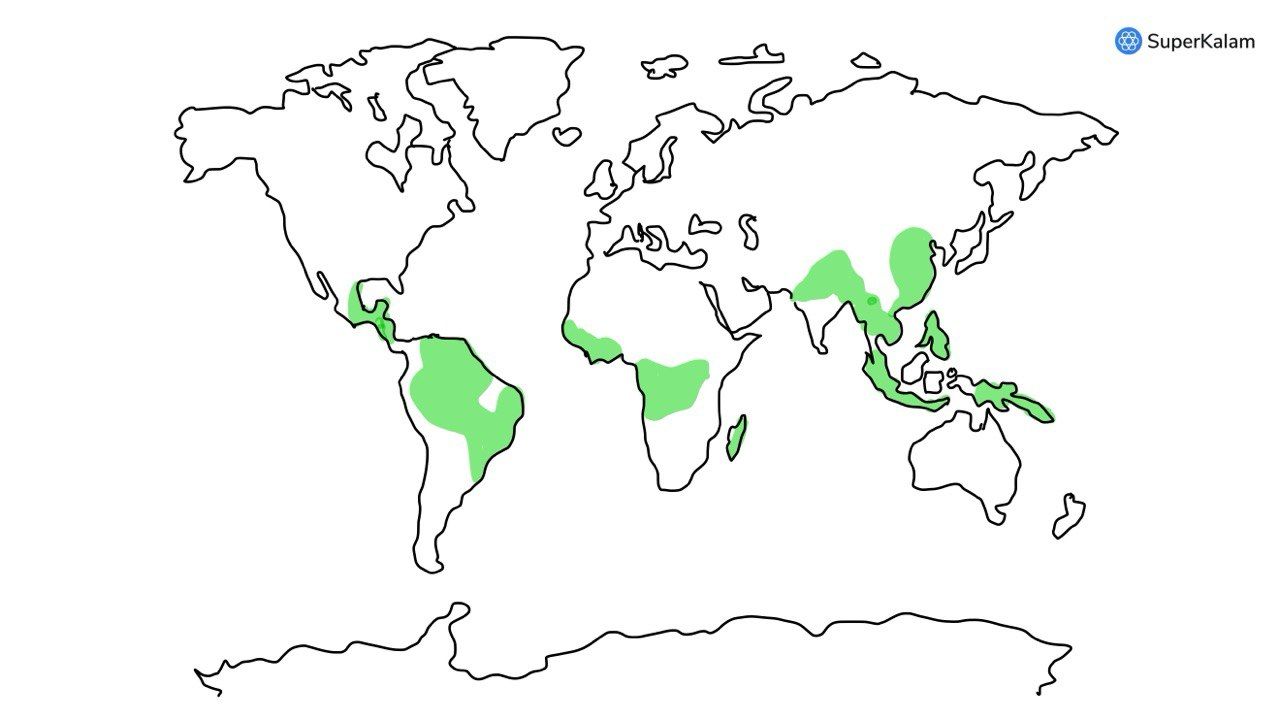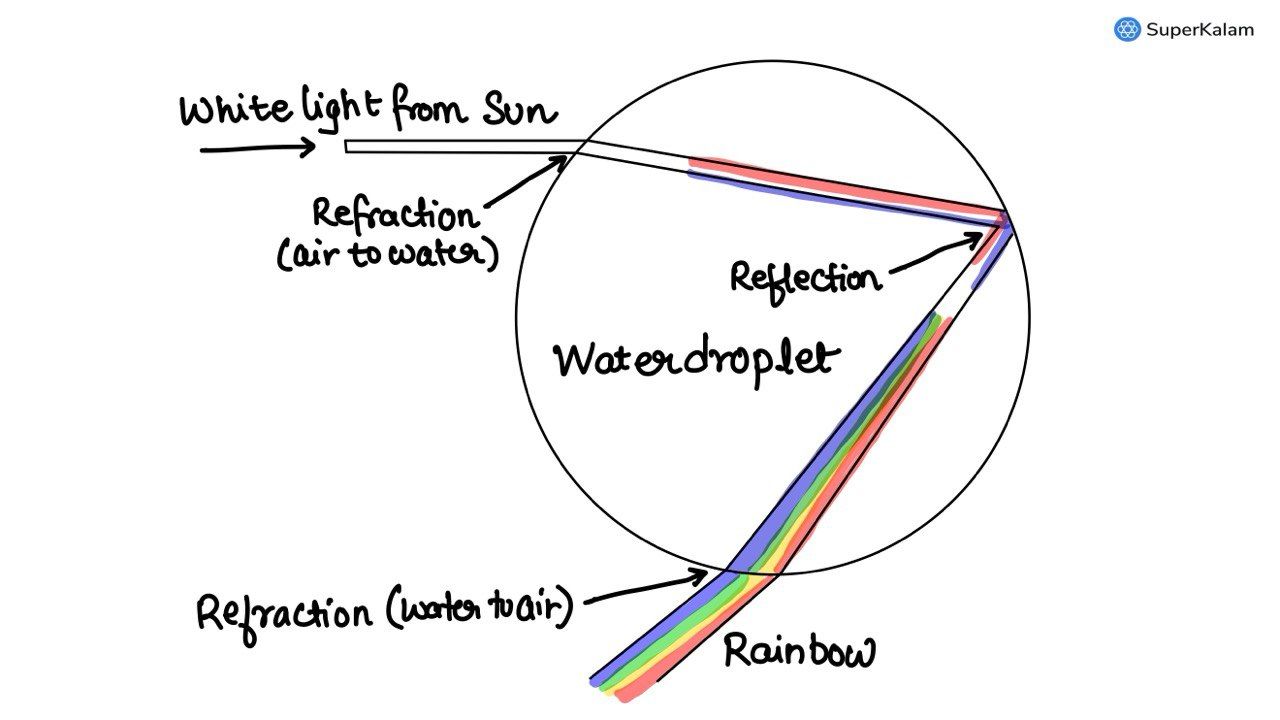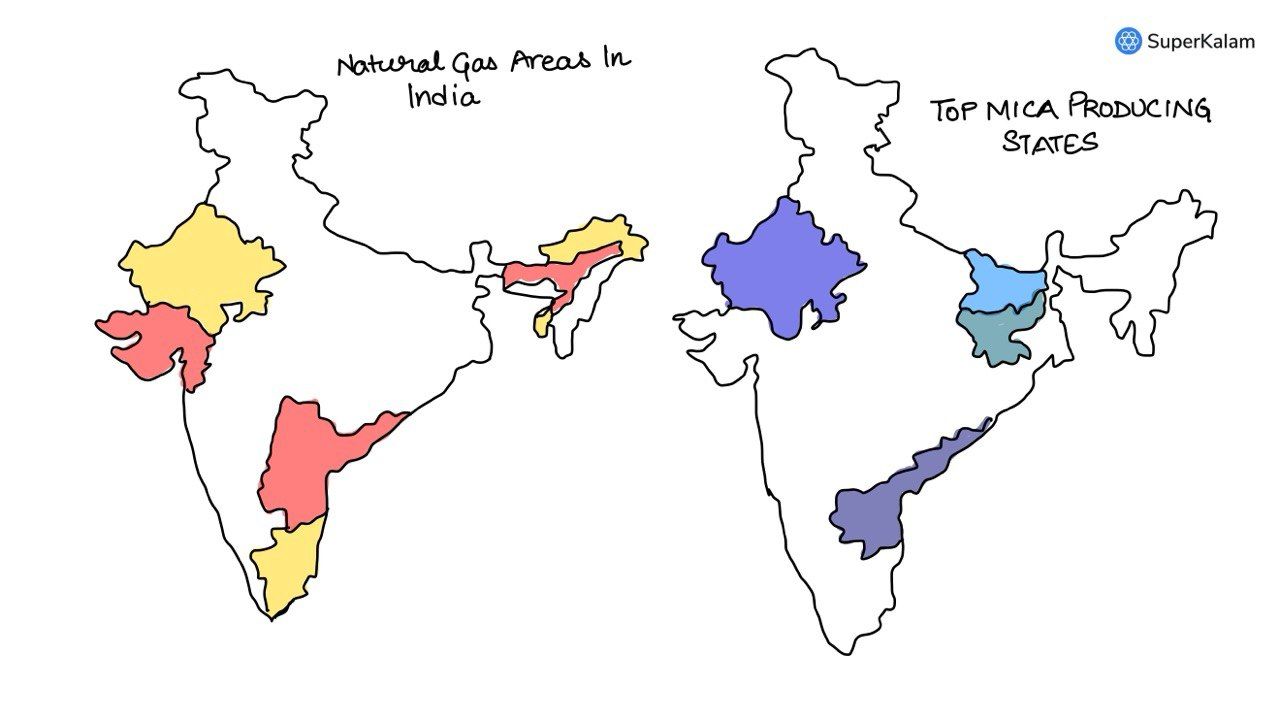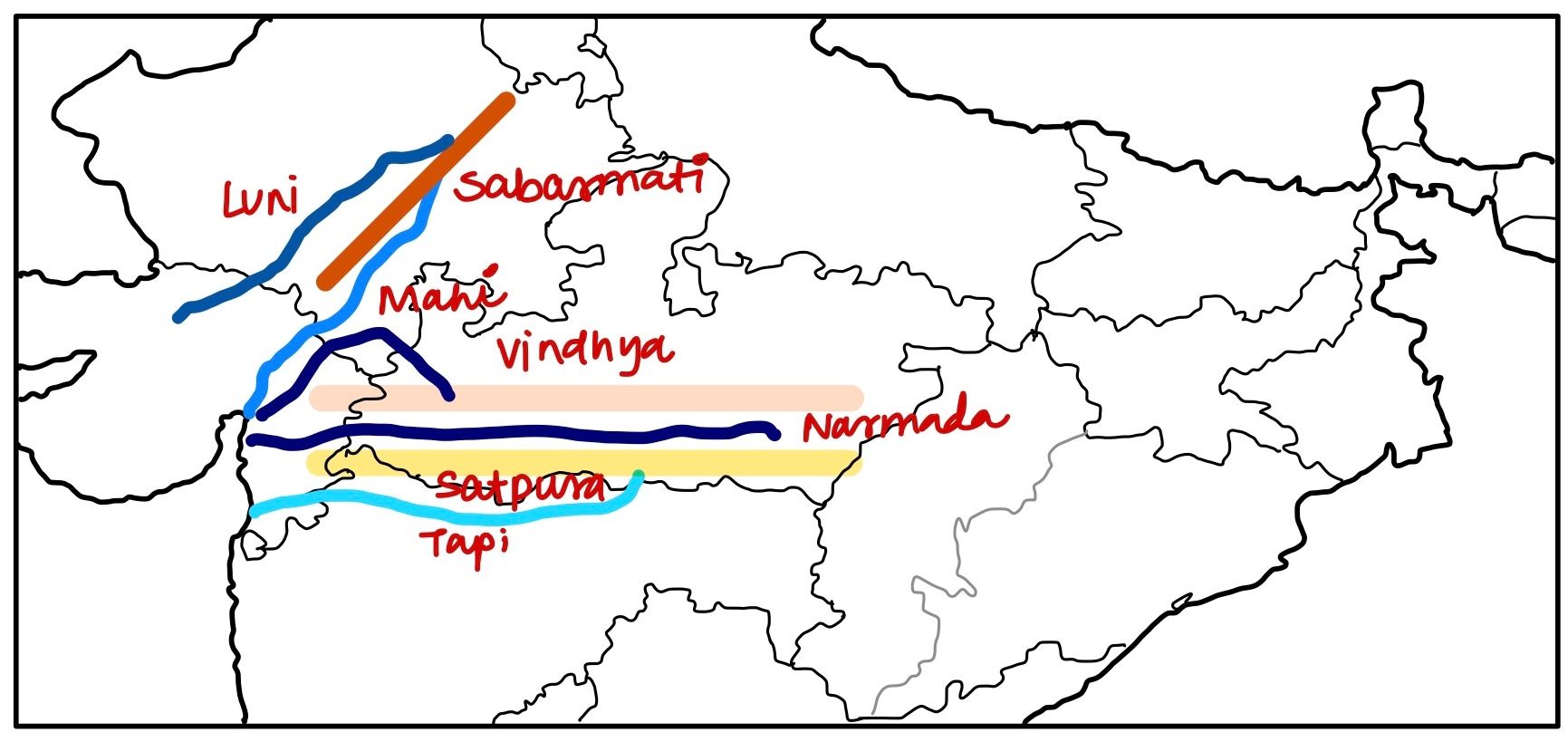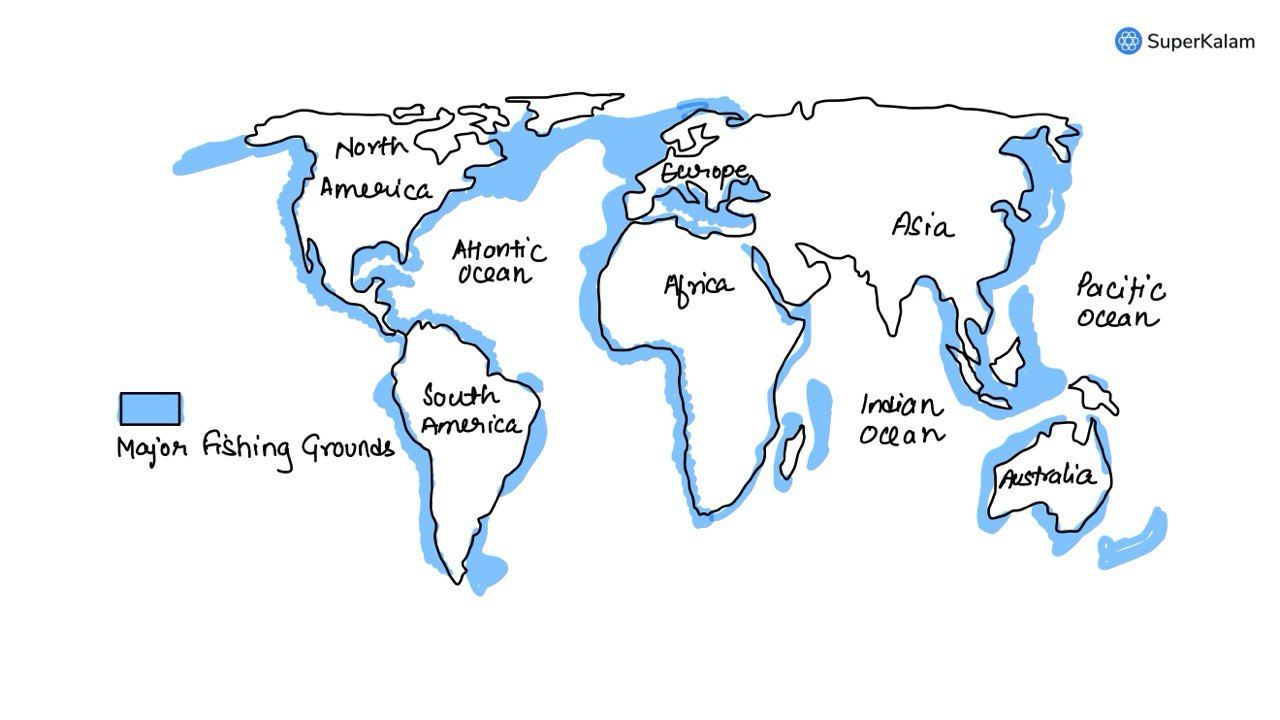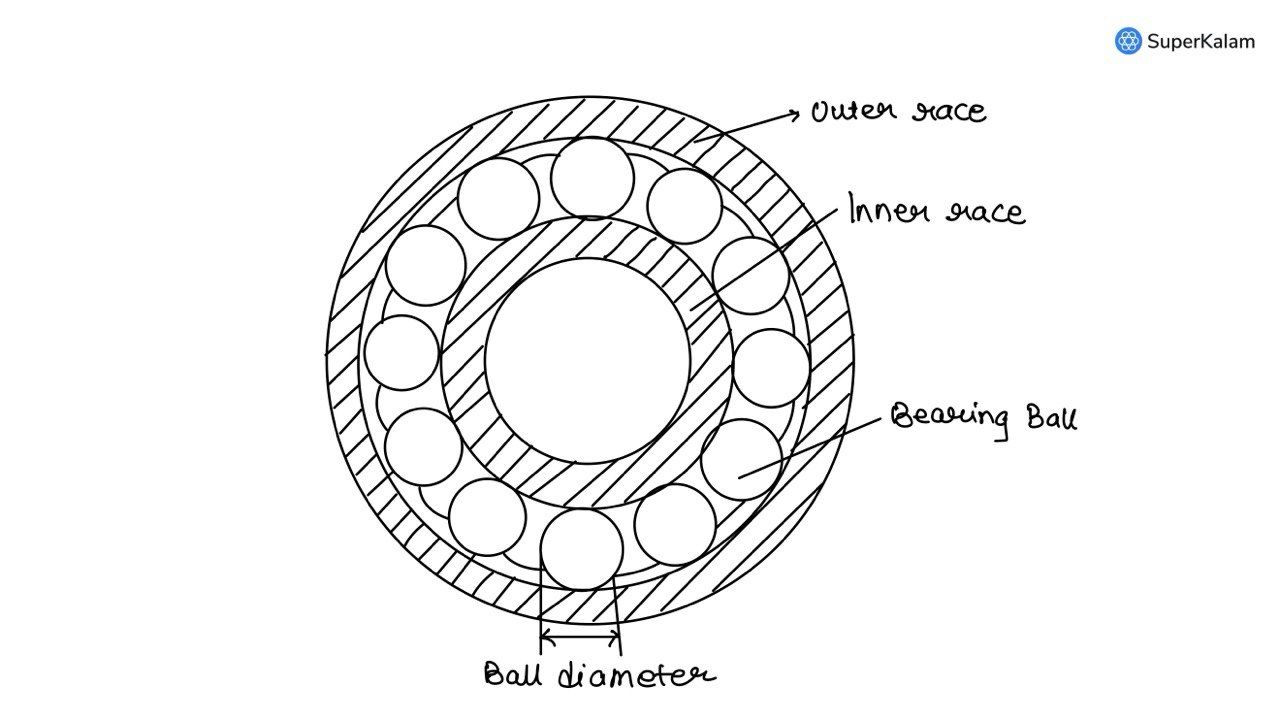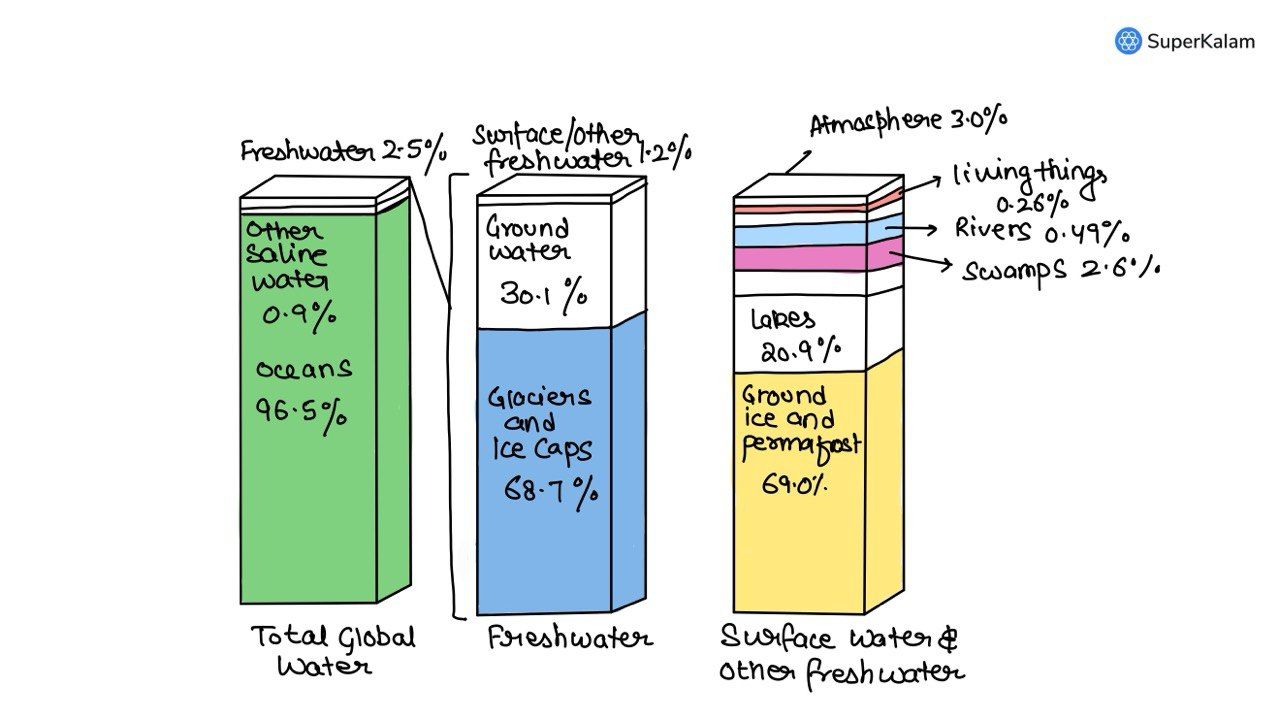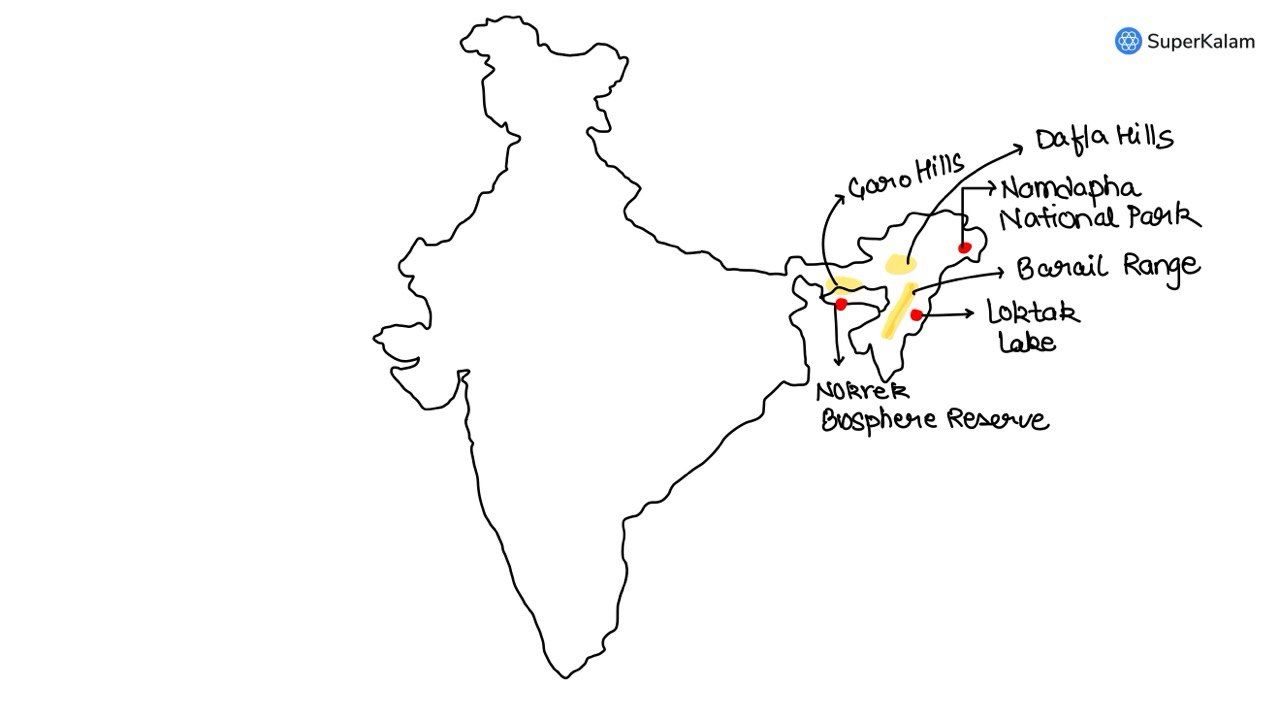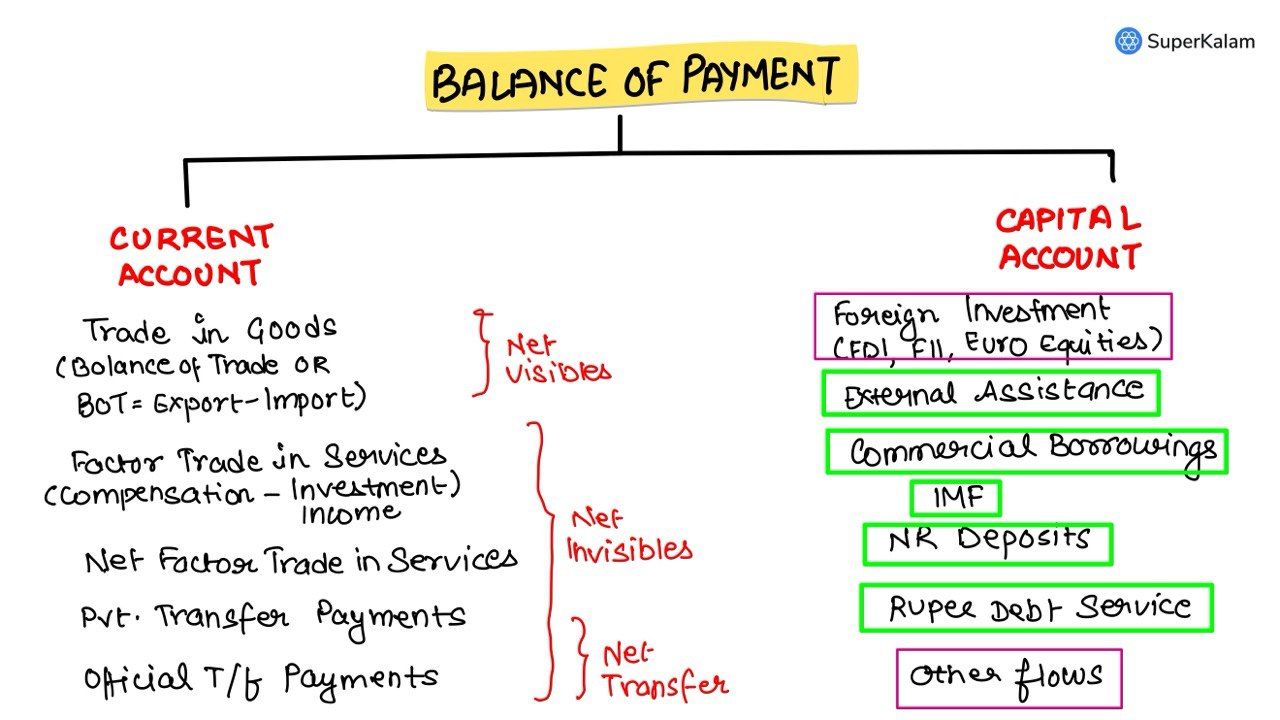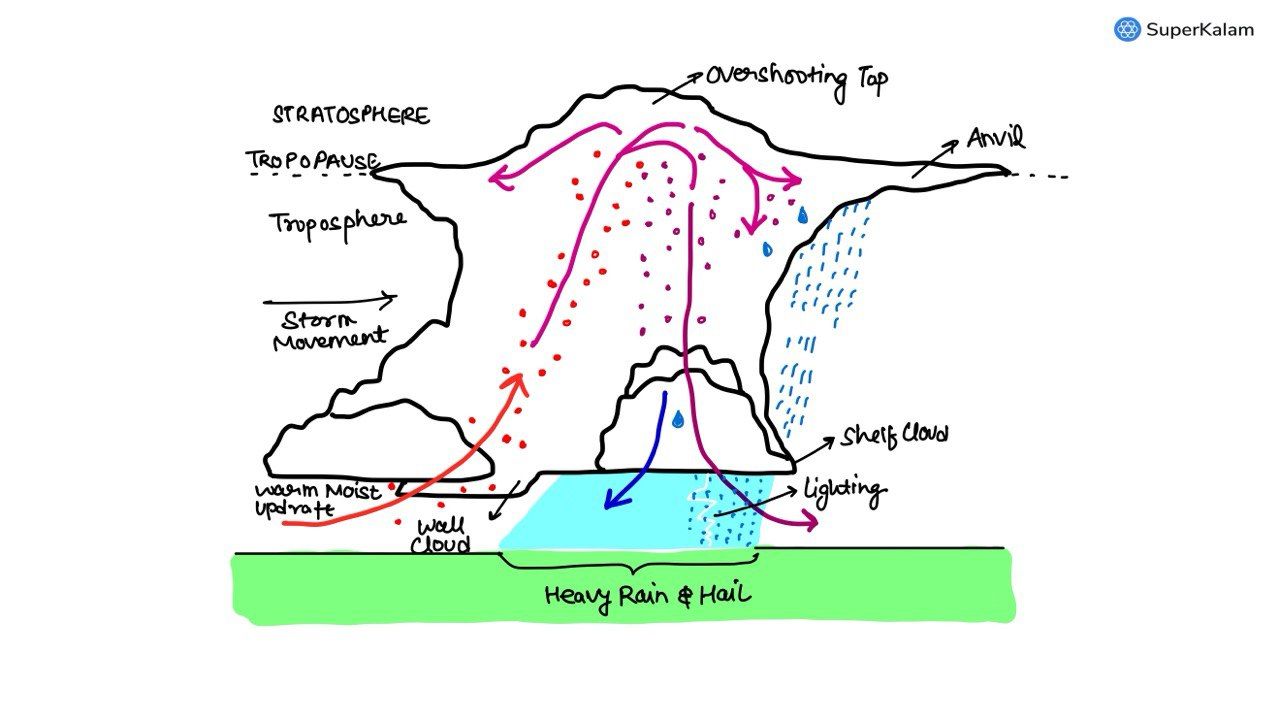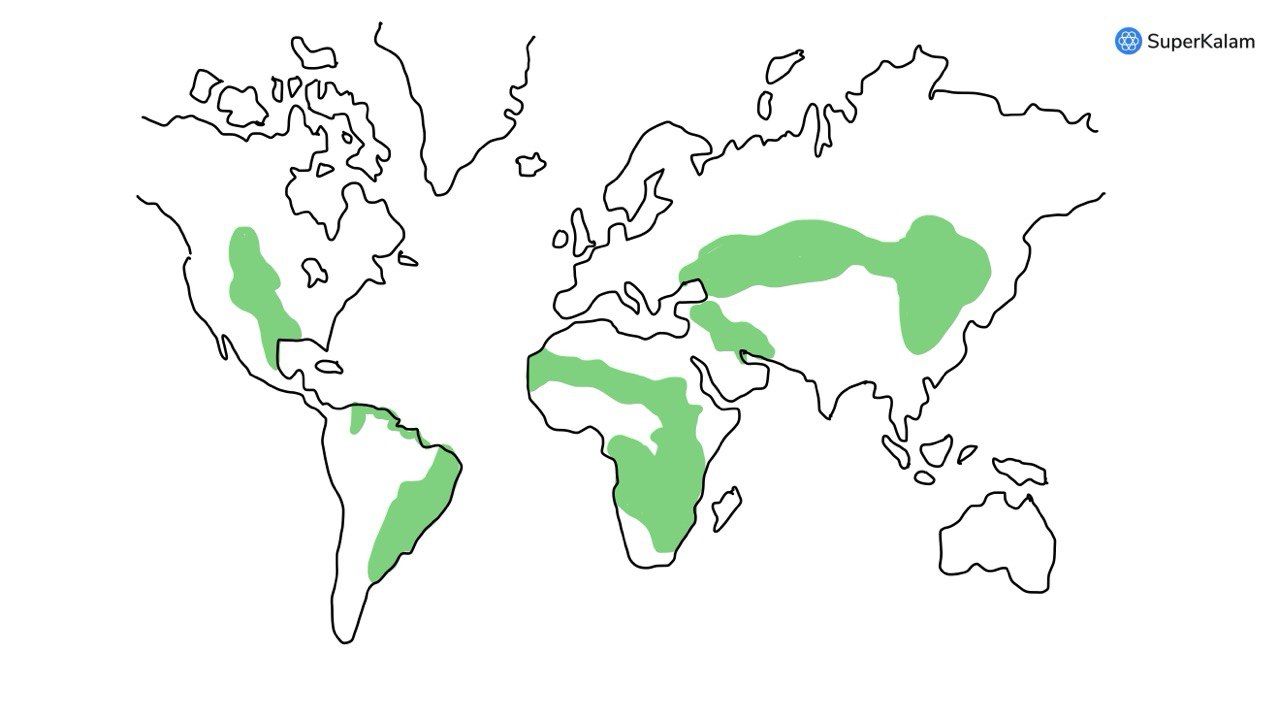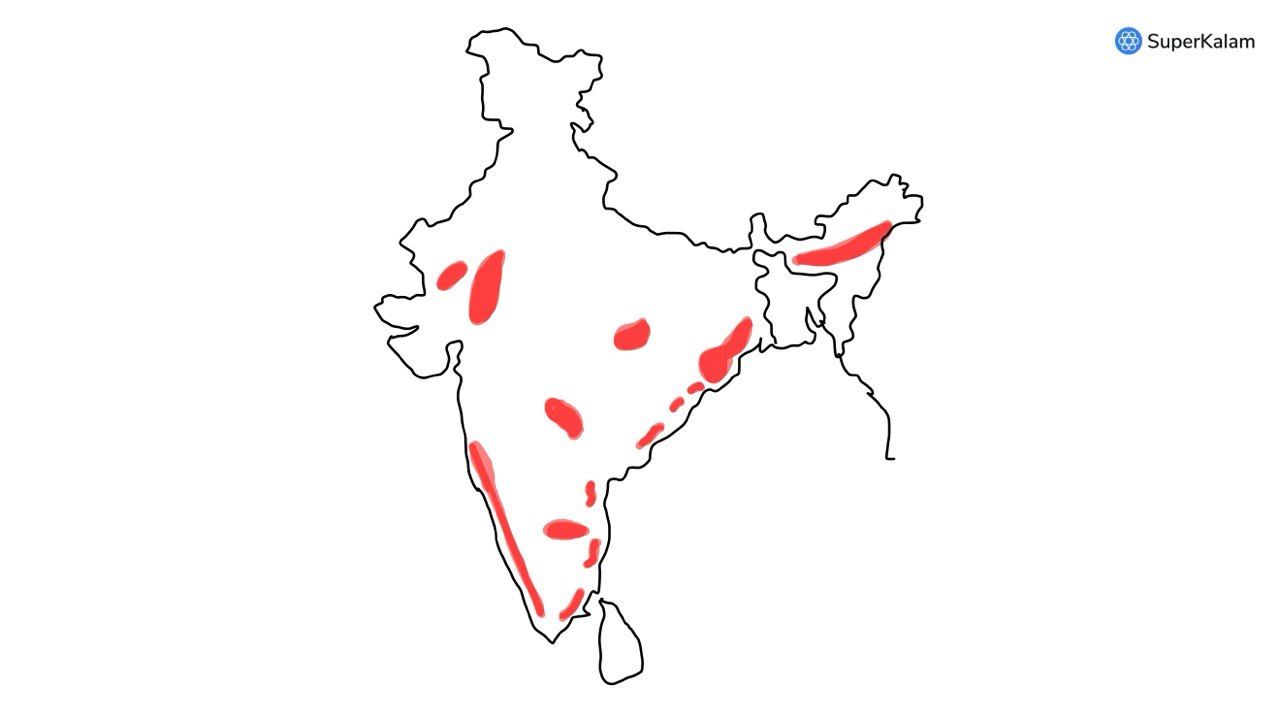UPSC Prelims 2013 Analysis
Subject-Wise MCQ Distribution
- Economy (16 Questions): A significant portion covered monetary policies, banking, economic indicators, and core concepts such as inflation and the balance of payments. Many questions followed the assertion-reasoning format, testing both conceptual clarity and practical application.
- Environment & Ecology (19 Questions): Focused on biodiversity, national parks, environmental pollution, and fundamental ecology concepts. Several questions required an interdisciplinary approach, linking topics to geography, governance, and climate policies.
- Indian Polity (15 Questions): Included constitutional provisions, policy frameworks, and governmental bodies. The paper tested static knowledge while integrating current affairs-based reasoning, making analytical abilities crucial.
- Science & Technology (16 Questions): Emphasized fundamental concepts and emerging technologies from biotechnology, space, and AI. Instead of direct current affairs-based questions, many were current affairs-inspired, requiring an understanding of recent developments and their applications.
- Art & Culture (9 Questions): Had a notable weightage, with a focus on Buddhism & Jainism, the Bhakti movement, architecture, and performing arts. Many questions followed the match the following format, requiring factual knowledge and conceptual linkages.
- History (8 Questions): Covered Ancient History (2) and Modern History (6), with no Medieval History questions. Modern History questions were relatively easy to medium in difficulty, making them scoring opportunities for well-prepared candidates.
- Geography (13 Questions): Included Physical Geography (5), Indian Geography (5), and World Geography (3). A strong emphasis was placed on conceptual understanding, with several questions integrating maps and geophysical phenomena.
- Social Issues & Government Schemes (4 Questions): Covered welfare schemes, social development programs, and demographic trends. Many were elimination-based, requiring a clear understanding of policy frameworks.
- International Relations (0 Questions): Unlike previous years, there were no direct questions on India’s foreign policy or global affairs, marking a deviation in trends.

Difficulty Analysis
- Easy Questions (39 Questions): Tested foundational knowledge, making them accessible to well-prepared aspirants.
- Medium Questions (39 Questions): Required analytical skills and an ability to link static concepts with real-world applications, especially in Economy and Science & Technology.
- Hard Questions (22 Questions): Demanded deep conceptual clarity and critical thinking, particularly in subjects like Economy and Environment.

Variations in Question Framing
- Multi-Statement Questions (56%) – A significant portion required critical analysis, logical deduction, and elimination strategies. These were common in Polity, Economy, and Environment, with many questions following the assertion-reasoning format.
- Direct Questions (44%) – Focused on factual recall, particularly in Science & Technology and History. These were relatively easier for candidates with strong static knowledge.

Current Affairs vs. Static Questions
- Current Affairs-Based Questions (14%) – While fewer in number, many static questions were inspired by current events, requiring candidates to apply their knowledge in real-world contexts.
- Static Knowledge-Based Questions (86%) – The majority of the paper focused on core subjects, reaffirming the importance of NCERT-based themes, standard books, and foundational concepts.
Key Learnings for Future Preparation
- Prioritize Static Subjects: Since 86% of the questions were static, aspirants must focus on NCERTs, standard reference books, and core concepts.
- Master Multi-Statement Questions: Developing skills to break down statements, eliminate incorrect options, and infer logical conclusions is crucial for improving accuracy.
- Emphasize Environment & Science & Technology: These subjects had a significant presence, requiring conceptual clarity over rote learning.
- Strengthen Art & Culture Preparation: With 9 questions, this subject played an important role, emphasizing cultural history and heritage.
- Approach Current Affairs Selectively: Although current affairs questions were fewer, many were inspired by contemporary issues, highlighting the need for smart, selective preparation instead of exhaustive memorization.
Subject-Wise Answer Key
QUESTION 1
Medium
Social Issues & Schemes
Prelims 2013
With reference to the National Legal Services Authority, consider the following statements :
- Its objective is to provide free and competent legal services to the weaker sections of the society on the basis of equal opportunity.
- It issues guidelines for the State Legal Services Authorities to implement the legal programs and schemes throughout the country.
Which of the statements given above is/are correct?
A. 1 only
B. 2 only
C. 1 and 2 only
D. None of the above
QUESTION 2
Medium
Environment & Ecology
Prelims 2013
With reference to the food chains in ecosystems, which of the following kinds of an organism is/are known as decomposer organism/organisms?
- Virus
- Fungi
- Bacteria
Select the correct answer using the codes given below.
A. 1 only
B. 2 and 3 only
C. 1 and 3 only
D. 1, 2 and 3
QUESTION 3
Hard
Science & Technology
Prelims 2013
Many transplanted seedlings do not grow because -
A. The new soil does not contain favourable minerals
B. Most of the root hairs grip the new soil too hard
C. Most of the root hairs are lost during the transplantation
D. Leaves get damaged during the Solution plantation
QUESTION 4
Medium
Indian Polity
Prelims 2013
Who among the following constitute the National Development Council?
- The Prime Minister
- The Chairman, Finance Commission
- Ministers of the Union Cabinet
- Chief Ministers of the States
Select the correct answer using the codes given below:
A. 1, 2 and 3 only
B. 1, 3 and 4 only
C. 2 and 4 only
D. 1, 2, 3 and 4
QUESTION 5
Medium
Economy
Prelims 2013
Consider the following liquid assets:
- Demand deposits with the banks
- Time deposits with the banks
- Savings deposits with the banks
- Currency
The correct sequence of these decreasing order of Liquidity is
A. 1-4-3-2
B. 4-3-2-1
C. 2-3-1-4
D. 4-1-3-2
QUESTION 6
Hard
Environment & Ecology
Prelims 2013
Which one among the following industries is the maximum consumer of water in India?
A. Engineering
B. Paper and pulp
C. Textiles
D. Thermal power
QUESTION 7
Easy
Indian Polity
Prelims 2013
Which of the following bodies does not/do not find mention in the Constitution?
- National Development Council
- Planning Commission
- Zonal Councils
Select the correct answer using the codes given below.
A. 1 only
B. 1 and 2 only
C. 2 and 3 only
D. 1, 2 and 3
QUESTION 8
Medium
Science & Technology
Prelims 2013
Fruits stored in a cold chamber exhibit longer storage life because -
A. exposure to sunlight is prevented
B. concentration dioxide in the is increased of carbon environment
C. rate of respiration is decreased
D. there is an increase in humidity
QUESTION 9
Hard
Environment & Ecology
Prelims 2013
Which of the following can be found as pollutants in the drinking water in some parts of India?
- Arsenic
- Sorbitol
- Fluoride
- Formaldehyde
- Uranium
Select the correct answer using the codes given below.
A. 1 and 3 only
B. 2, 4 and 5 only
C. 1, 3 and 5 only
D. 1, 2, 3, 4 and 5
QUESTION 10
Hard
Environment & Ecology
Prelims 2013
Consider the following
- Star tortoise
- Monitor lizard
- Pygmy Hog
- Spider monkey
Which of the above found in India?
A. 1, 2 and 3 only
B. 2 and 3 only
C. 1 and 4 only
D. 1, 2,3 and 4
QUESTION 11
Easy
Indian Polity
Prelims 2013
Under the Scheduled Tribes and Other Traditional Forest Dwellers (Recognition of Forest Rights) Act, 2006, who shall be the authority to initiate the process for determining the nature and extent of individual or community forest rights or both?
A. State Forest Department
B. District Collector/Deputy Commissioner
C. Tahsildar /Block Development Officer / Mandai Revenue Officer
D. Gram Sabha
QUESTION 12
Medium
World Geography
Prelims 2013
Which of the following is/are unique characteristic/characteristics of equatorial forests?
- Presence of tall, closely set trees with crowns forming a continuous canopy
- Coexistence of a large number of species
- Presence of numerous varieties of epiphytes
Select the correct answer using the code given below:
A. 1 only
B. 2 and 3 only
C. 1 and 3 only
D. 1, 2 and 3
QUESTION 13
Easy
Indian Polity
Prelims 2013
According to the Constitution of India, which of the following are fundamental for the governance of the country?
A. Fundamental Rights
B. Fundamental Duties
C. Directive Principles of State Policy
D. Fundamental Rights and Fundamental Duties
QUESTION 14
Medium
Science & Technology
Prelims 2013
Rainbow is produced when sunlight falls on drops of rain. Which of the following physical phenomena are responsible for this?
- Dispersion
- Refraction
- Internal reflection
Select the correct Solution using the codes given below.
A. 1 only
B. 1 and 2 only
C. 2 and 3 only
D. 1, 2 and 3
QUESTION 15
Easy
Indian Polity
Prelims 2013
What will follow if a Money Bill is substantially amended by the Rajya Sabha?
A. The Lok Sabha may still proceed with the Bill, accepting or not accepting the recommendations of the Rajya Sabha
B. The Lok Sabha cannot consider the Bill further
C. The Lok Sabha may send the Bill to the Rajya Sabha for reconsideration
D. The President may call a joint sitting for passing the Bill
QUESTION 16
Easy
Indian Polity
Prelims 2013
Consider the following statements
- An amendment to the Constitution of India can be initiated by the introduction of a bill in the Lok Sabha only.
- If such an amendment seeks to make changes in the federal character of the Constitution, the amendment also requires to be ratified by the legislature of all the States of India.
Which of the statements given above is/are correct?
A. 1 only
B. 2 only
C. Both 1 and 2
D. Neither 1 nor 2
QUESTION 17
Medium
Environment & Ecology
Prelims 2013
Which of the following leaf modifications occurs/occur in desert areas to inhibit water loss?
- Hard and waxy leaves
- Tiny leaves or no leaves
- Thorns instead of leaves
Select the correct answer using the codes given below.
A. 1 and 2 only
B. 2 only
C. 1 and 3 only
D. 1, 2 and 3
QUESTION 18
Medium
Environment & Ecology
Prelims 2013
Which of the following adds/add nitrogen to the soil?
- Excretion of urea by animals
- Burning of coal by man
- Death of vegetation
Select the correct answer using the codes given below.
A. 1 only
B. 2 and 3 only
C. 1 and 3 only
D. 1, 2 and 3
QUESTION 19
Hard
Science & Technology
Prelims 2013
Consider the following animals:
- Sea cow
- Sea horse
- Sea lion
Which of the above is/are mammal/mammals?
A. 1 only
B. 1 and 3 only
C. 2 and 3 only
D. 1, 2 and 3
QUESTION 20
Easy
Environment & Ecology
Prelims 2013
Acid rain is caused by the pollution of the environment by -
A. Carbon dioxide and nitrogen
B. Carbon monoxide and carbon dioxide
C. Ozone and carbon dioxide
D. Nitrous oxide and sulphur dioxide
QUESTION 21
Easy
Modern History
Prelims 2013
The people of India agitated against the arrival of Simon Commission because:
A. Indians never wanted the review of the working of the Act of 1919
B. Simon Commission recommended the abolition of Dyarchy Diarchy in the Provinces
C. There was no Indian member in the Simon Commission
D. The Simon Commission suggested the partition of the country
QUESTION 22
Hard
World Geography
Prelims 2013
Which one of the following pairs is correctly matched? Geographical Feature -- Region
A. Abyssinian Plateau -- Arabia
B. The Atlas Mountains -- North-Western Africa
C. Guiana Highlands -- South-Western Africa
D. Okavango Basin -- Patagonia
QUESTION 23
Medium
Physical Geography
Prelims 2013
Consider the following:
- Electromagnetic radiation
- Geothermal energy
- Gravitational force
- Plate Movements
- Rotation of the earth
- Revolution of the earth
Which of the above are responsible for bringing dynamic changes on the surface of the earth?
A. 1, 2, 3 and 4 only
B. 1, 3, 5 and 6 only
C. 2, 4, 5 and 6 only
D. 1, 2, 3, 4, 5 and 6
QUESTION 24
Easy
Economy
Prelims 2013
In India, deficit financing is used for raising resources for
A. Economic development
B. Redemption of public debt
C. Adjusting the balance of payments
D. Reducing foreign debt
QUESTION 25
Hard
Science & Technology
Prelims 2013
Mycorrhizal Biotechnology has been used in rehabilitating degraded sites because mycorrhiza enables the plants to -
- Resist drought and increase absorptive area
- Tolerate extremes of pH
- Resist disease infestation
Select the correct answer using the codes given below:
A. 1 only
B. 1 and 2 only
C. 1, 2 and 3 only
D. 2 and 3 only
QUESTION 26
Medium
Environment & Ecology
Prelims 2013
Due to improper/indiscriminate disposal of old and used computers or their parts, which of the following are released into the environment as e-waste?
- Beryllium
- Cadmium
- Chromium
- Heptachlor
- Mercury
- Lead
- Plutonium
Select the correct answer using the codes given below.
A. 1, 3, 4, 6 and 7 only
B. 1, 2, 3, 5 and 6 only
C. 2, 4, 5 and 7 only
D. 1, 2, 3, 4, 5, 6 and 7
QUESTION 27
Easy
Modern History
Prelims 2013
The Ilbert Bill controversy was related to the:
A. Imposition restrictions the Indians of certain to carry arms by Indians
B. Imposition of restrictions on newspapers and magazines published in Indian languages
C. Removal of disqualifications imposed on the Indian magistrates with regard to the trial of the Europeans
D. Removal of a duty on imported cotton cloth
QUESTION 28
Medium
Environment & Ecology
Prelims 2013
In which of the following States is lion-tailed macaque found in its natural habitat?
- Tamil Nadu
- Kerala
- Karnataka
- Andhra Pradesh
Select the correct answer using the codes given below.
A. 1, 2 and 3 only
B. 2 only
C. 1, 3 and 4 only
D. 1, 2, 3 and 4
QUESTION 29
Medium
Art & Culture
Prelims 2013
In the context of the cultural history of India, a pose in dance and dramatics called ‘Tribhanga’ has been a favourite of Indian artists from ancient times till today. Which one of the following statements best describes this pose?
A. One leg is bent and the body is slightly but oppositely curved at waist and neck
B. Facial expressions, hand gestures and make-up are combined to symbolize certain epic or historic characters
C. Movements of body, face and hands are used to express oneself or to tell a story
D. A little smile, slightly curved waist and certain hand gestures are emphasized to express the feelings of love or eroticism
QUESTION 30
Medium
Science & Technology
Prelims 2013
With reference to the usefulness of the by-products of the sugar industry, which of the following statements is/are correct?
- Bagasse can be used as biomass fuel for the generation of energy.
- Molasses can be used as one of the feedstocks for the production of synthetic chemical fertilizers.
- Molasses can be used for the production of ethanol.
Select the correct answer using the codes given below.
A. 1 only
B. 2 and 3 only
C. 1 and 3 only
D. 1, 2 and 3
QUESTION 31
Medium
Environment & Ecology
Prelims 2013
Consider the following fauna of India:
- Gharial
- Leatherback turtle
- Swamp deer
Which of the above is/are endangered?
A. 1 and 2 only
B. 3 only
C. 1, 2 and 3 only
D. None
QUESTION 32
Easy
Environment & Ecology
Prelims 2013
In the grasslands, trees do not replace the grasses as a part of an ecological succession because of
A. Insects and fungi
B. Limited sunlight and the paucity of nutrients
C. Water limits and fire
D. None of the above
QUESTION 33
Hard
Art & Culture
Prelims 2013
Consider the following pairs :
- Limboo (Limbu): Sikkim
- Karbi: Himachal Pradesh
- Dongaria: Odisha
- Bonda: Tamil Nadu
Which of the above pairs are correctly matched?
A. 1 and 3 only
B. 1 and 2 only
C. 2 and 3 only
D. 1, 2, 3 and 4
QUESTION 34
Easy
Indian Polity
Prelims 2013
Which one of the following statements is correct?
A. In India, the same person cannot be appointed as Governor for two or more States at the same time
B. The Judges of the High Court of the States in India are appointed by the Governor of the State just as the Judges of the Supreme Court are appointed by the President
C. No procedure has been laid down in the Constitution of India for the removal of a Governor from his/her post
D. In the case of a Union Territory having a legislative setup, the Chief Minister is appointed by the President on the basis of majority support.
QUESTION 35
Easy
Environment & Ecology
Prelims 2013
Which one of the following terms describes not only the physical space occupied by an organism but also its functional role in the community of organisms?
A. Ecotone
B. Ecological niche
C. Habitat
D. Home range
QUESTION 36
Hard
Indian Geography
Prelims 2013
Which of the following is/are the characteristic/ characteristics of Indian coal?
- High ash content
- Low sulphur content
- The low ash fusion temperature
Select the correct answer using the codes given below.
A. 1 only
B. 1 and 2 only
C. 2 and 3 only
D. 1, 2 and 3
QUESTION 37
Medium
Social Issues & Schemes
Prelims 2013
Priority Sector Lending by banks in India constitutes the lending to:
A. Agriculture
B. Micro and small enterprises
C. Weaker Sections
D. All of the above
QUESTION 38
Medium
Economy
Prelims 2013
The Reserve Bank of India regulates the commercial banks in matters of -
- Liquidity of assets
- Branch expansion
- Merger of banks
- Winding-up of banks
Select the correct answer using the codes given below.
A. 1 and 4 only
B. 1 and 2 only
C. 2, 3 and 4 only
D. 1, 2, 3 and 4
QUESTION 39
Medium
Economy
Prelims 2013
Which of the following constitute Capital Account?
- Foreign Loans
- Foreign Direct Investment
- Private Remittances
- Portfolio Investment
Select the correct answer using the codes given below.
A. 1, 2 and 3 only
B. 1, 2 and 4 only
C. 3 and 4 only
D. 1, 2 and 3
QUESTION 40
Hard
Indian Geography
Prelims 2013
Consider the following statements:
- Natural gas occurs in the Gondwana beds.
- Mica occurs in abundance in Kodarma.
- Dharwars are famous for petroleum.
Which of the statements given above is/are correct?
A. 1 only
B. 2 only
C. 2 and 3 only
D. None
QUESTION 41
Hard
Indian Geography
Prelims 2013
The Narmada river flows to the west, while most other large peninsular rivers flow to the east. Why?
- It occupies a linear rift valley.
- It flows between the Vindhyas and the Satpuras.
- The land slopes to the west from Central India.
Select the correct answer using the codes given below.
A. 1 only
B. 1 and 3 only
C. 2 and 3 only
D. None
QUESTION 42
Medium
Science & Technology
Prelims 2013
Which of the following diseases can be transmitted from one person to another through tattooing?
- Chikungunya
- Hepatitis B
- HIV-AIDS
Select the correct answer using the codes given below.
A. 1 only
B. 1 and 2 only
C. 2 and 3 only
D. 1, 2 and 3
QUESTION 43
Easy
Economy
Prelims 2013
Disguised unemployment generally means
A. A Large number of people remain unemployed
B. Alternative employment is not available
C. Marginal productivity of labour is zero
D. Productivity of workers is low
QUESTION 44
Medium
Science & Technology
Prelims 2013
Which of the following statements is/are correct?
- Viruses lack enzymes necessary for the generation of energy.
- Viruses can be cultured in any synthetic medium.
- Viruses are transmitted from one organism to another by biological vectors only.
Select the correct answer using the codes given below.
A. 1 only
B. 1 and 2 only
C. 1 and 3 only
D. 1, 2 and 3
QUESTION 45
Easy
Physical Geography
Prelims 2013
The most important fishing grounds of the world are found in the regions where:
A. Warm and cold atmospheric currents meet
B. Rivers drain out large amounts of fresh water into the sea
C. Warm and cold oceanic currents meet
D. Continental shelf is undulating
QUESTION 46
Hard
Art & Culture
Prelims 2013
With reference to the history of philosophical thought in India, consider the following statements regarding Sankhya school:
- Sankhya does not accept the theory of rebirth or transmigration of the soul.
- Sankhya holds that it is the self-knowledge that leads to liberation and not any exterior influence or agent.
Which of the statements given above is /are correct?
A. 1 only
B. 2 only
C. 1 and 2
D. Neither 1 nor 2
QUESTION 47
Easy
Economy
Prelims 2013
In the context of Indian economy, Open Market Operations’ refers to:
A. Borrowing by scheduled banks from the RBI
B. Lending by commercial banks to industry and trade
C. Purchase and sale of government securities by the RBI
D. None of the above
QUESTION 48
Hard
Art & Culture
Prelims 2013
Consider the following historical places:
- Ajanta Caves
- Lepakshi Temple
- Sanchi Stupa
Which of the above places is/are also known for mural paintings?
A. 1 only
B. 1 and 2 only
C. 3 only
D. 1, 2 and 3
QUESTION 49
Easy
Economy
Prelims 2013
Supply of money remaining the same when there is an increase in demand for money, there will be:
A. a fall in the level of prices
B. an increase in the rate of interest
C. a decrease in the rate of interest
D. an increase in the level of income and employment
QUESTION 50
Medium
Modern History
Prelims 2013
Annie Besant was:
- Responsible for starting the Home Rule Movement
- The founder of the Theosophical Society
- Once the President of the Indian National Congress
Select the correct statement/statements using the codes given below.
A. 1 only
B. 1 and 2 only
C. 1 and 3 only
D. 1, 2 and 3
QUESTION 51
Medium
Economy
Prelims 2013
The National income of a country for a given period is equal to the:
A. The total value of goods and services produced by the nationals
B. Sum of total consumption and investment expenditure
C. Sum of personal income of all individuals
D. Money value of final goods and services produced
QUESTION 52
Easy
Physical Geography
Prelims 2013
Variations in the length of daytime and nighttime from season to season are due to -
A. The earth’s rotation on its axis
B. Revolution of the earth on a tilted axis
C. Latitudinal position of the place
D. The earth’s revolution around the sun in an elliptical manner
QUESTION 53
Medium
Economy
Prelims 2013
Economic growth in country X will necessarily have to occur if
A. there is technical progress in the world economy
B. there is population growth in X
C. there is a capital formation in X
D. the volume of trade grows in the world economy
QUESTION 54
Easy
Environment & Ecology
Prelims 2013
With reference to food chains in ecosystems, consider the following statements :
- A food chain illustrates the order in which a chain of organisms feeds upon each other.
- Food chains are found within the populations of a species.
- A food chain illustrates the numbers of each organism which are eaten by others.
Which of the statements given above is/are correct?
A. 1 only
B. 1 and 2 only
C. 1, 2 and 3
D. None
QUESTION 55
Easy
Social Issues & Schemes
Prelims 2013
To obtain full benefits of demographic dividend, what should India do?
A. Promoting skill development
B. Introducing more social security schemes
C. Reducing infant mortality rate
D. Privatization of higher education
QUESTION 56
Easy
Indian Polity
Prelims 2013
‘Economic Justice’ the objectives of Constitution has been as one of the Indian provided in:
A. the Preamble and Fundamental Rights
B. the Preamble and the Directive Principles of State Policy
C. the Fundamental Rights and the Directive Principles of State Policy
D. None of the above
QUESTION 57
Easy
Economy
Prelims 2013
Which one of the following is likely to be the most inflationary in its effect?
A. Repayment of public debt
B. Borrowing from the public to finance a budget deficit
C. Borrowing from banks to finance a budget deficit
D. Creating new money to finance a budget deficit
QUESTION 58
Medium
Ancient History
Prelims 2013
The Chinese traveller Yuan Chwang (Hiuen Tsang) who visited India recorded the general conditions and culture of India at that time. In this context, which of the following statements is/are correct?
- The roads and river-routes were completely immune from the robbery.
- As regards punishment for offences, ordeals by fire, water and poison were the instruments for determining the innocence or guilt of a person.
- The tradesmen had to pay duties at ferries and barrier stations.
Select the correct answer using the codes given below.
A. 1 only
B. 1 and 2 only
C. 2 and 3 only
D. 1, 2 and 3
QUESTION 59
Medium
Environment & Ecology
Prelims 2013
Consider the following pairs about parks and rivers passing through them:
- Corbett National Park: Ganga
- Kaziranga National Park: Manas
- Silent Valley National Park: Kaveri
Which of the above pairs is/are correctly matched?
A. 1 and 2 only
B. 3 only
C. 1 and 3 only
D. None
QUESTION 60
Easy
Indian Polity
Prelims 2013
The Parliament can make any law for whole or any part of India for implementing international treaties
A. with the consent of all the States
B. with the consent of the majority of States
C. with the consent of the States concerned
D. without the consent of any State
QUESTION 61
Easy
Economy
Prelims 2013
Which one of the following groups of items are included in India’s foreign-exchange reserves?
A. Foreign-currency assets, Special Drawing Rights SDRs and loans from foreign countries
B. Foreign-currency assets, gold holdings of the RBI and SDRs
C. Foreign-currency assets, loans from the World Bank and SDRs
D. Foreign-currency assets, gold holdings of the RBI and loans from the World Bank
QUESTION 62
Hard
Science & Technology
Prelims 2013
Improper handling and storage of cereal grains and oilseeds result in the production of toxins known as aflatoxins which are not generally destroyed by normal cooking process. Aflatoxins are produced by
A. bacteria
B. protozoa
C. moulds
D. viruses
QUESTION 63
Medium
Indian Polity
Prelims 2013
Consider the following statements:
- The Chairman and the Deputy Chairman of the Rajya Sabha are not the members of that House.
- While the nominated members of the two Houses of the Parliament have no voting right in the presidential election, they have the right to vote in the election of the Vice President.
Which of the statements given above is/are correct?
A. 1 only
B. 2 only
C. Both 1 and 2
D. Neither 1 nor 2
QUESTION 64
Medium
Ancient History
Prelims 2013
Which of the following characterizes/ characterize the people of Indus Civilization?
- They possessed great palaces and temples.
- They worshipped both male and female deities.
- They employed horse-drawn chariots in warfare.
Select the correct statement/ statements using the codes given below.
A. 1 and 2 only
B. 2 only
C. 2 and 3 only
D. None of the statements given above is correct
QUESTION 65
Medium
Science & Technology
Prelims 2013
Ball bearings are used in bicycles, cars, etc., because
A. the actual area of contact between the wheel and axle is increased
B. the effective area of contact between the wheel and axle is increased
C. the effective area of contact between the wheel and axle is reduced
D. None of the above statements is correct
QUESTION 66
Medium
Indian Polity
Prelims 2013
In the context of India, which of the following principles is/are implied institutionally in the parliamentary government?
- Members of the Cabinet are Members of Parliament.
- Ministers hold the office till they enjoy confidence in the Parliament.
- Cabinet is headed by the Head of the State.
Select the correct answer using the codes given below.
A. 1 and 2 only
B. 3 only
C. 2 and 3 only
D. 1, 2 and 3
QUESTION 67
Easy
Physical Geography
Prelims 2013
On the planet earth, most of the freshwater exists as ice caps and glaciers. Out of the remaining freshwater, the largest proportion
A. is found in the atmosphere as moisture and clouds
B. is found in freshwater lakes and rivers
C. exists as groundwater
D. exists as soil moisture
QUESTION 68
Easy
Indian Polity
Prelims 2013
Consider the following statements:
- The Council of Ministers at the Centre shall be collectively responsible to the Parliament.
- The Union Ministers shall hold the office during the pleasure of the President of India.
- The Prime Minister shall communicate to the President about the proposals for Legislation.
Which of the Statements given above is/are correct?
A. 1 only
B. 1 and 2 only
C. 2 and 3 only
D. 1, 2 and 3
QUESTION 69
Medium
Science & Technology
Prelims 2013
The known forces of nature can be divided into four classes, viz, gravity, electromagnetism, weak nuclear force and strong nuclear force. With reference to them, which one of the following statements is not correct?
A. Gravity is the strongest of the four
B. Electromagnetism act only on particles with an electric charge
C. Weak nuclear force causes radioactivity
D. Strong nuclear force holds protons and neutrons inside the nuclear of an atom.
QUESTION 70
Medium
Environment & Ecology
Prelims 2013
Consider the following pairs:
| Protected areas | Region |
|---|---|
| 1. Nokrek Biosphere Reserve | Garo Hills |
| 2. Logtak (Loktak) Lake | Barail Range |
| 3. Namdapha National Park | Dafla Hills |
Which of the above pairs is/are correctly matched?
A. None
B. 2 and 3 only
C. 1,2 and 3 only
D. 1 only
QUESTION 71
Hard
Art & Culture
Prelims 2013
With reference to the history of Indian rock-cut architecture, consider the following statements:
- The caves at Badami are the oldest surviving rock-cut caves in India.
- The Barabar rock-cut caves were originally made for Ajivikas by Emperor Chandragupta Maurya.
- At Ellora, caves were made for different faiths.
Which of the statements given above is/are correct?
A. 1 only
B. 1 and 2 only
C. 3 only
D. 1, 2 and 3
QUESTION 72
Medium
Environment & Ecology
Prelims 2013
Which one of the following is the correct sequence of ecosystems in the order of decreasing productivity?
A. Oceans, lakes, grasslands, mangroves
B. Mangroves, oceans, grasslands, lakes
C. Mangroves, grasslands, lakes, oceans
D. Oceans, mangroves, lakes, grasslands
QUESTION 73
Easy
Science & Technology
Prelims 2013
Recombinant DNA technology (Genetic Engineering) allows genes to be transferred
- Across different species of plants.
- From animals to plants.
- From microorganisms to higher organisms.
Select the correct Solution using the codes given below.
A. 1 only
B. 1 and 2 only
C. 2 and 3 only
D. 1, 2 and 3
QUESTION 74
Hard
Science & Technology
Prelims 2013
Consider the following minerals -
- Calcium
- Iron
- Sodium
Which of the minerals given above is/are required by the human body for the contraction of muscles?
A. 1 only
B. 1 and 2 only
C. 1 and 3 only
D. 1, 2 and 3
QUESTION 75
Easy
Modern History
Prelims 2013
Quit India Movement was launched in response to:
A. Cabinet Mission Plan
B. Cripps Proposals
C. Simon Commission Report
D. Wavell Plan
QUESTION 76
Easy
Economy
Prelims 2013
The balance of payments of a country is a systematic record of
A. all import and export transactions of a country during a given period of time, normally a year
B. goods exported from a country during a year
C. the economic transaction between the government of one country to another
D. capital movements from one country to another
QUESTION 77
Medium
Indian Polity
Prelims 2013
Consider the following statements:
- National Development Council is an organ of the Planning Commission.
- The Economic and Social Planning is kept in the Concurrent List in the Constitution of India.
- The Constitution of India prescribes that Panchayats should be assigned the task of preparation of plans for economic development and social justice.
Which of the statements given above is/are correct?
A. 1 only
B. 1 and 2 only
C. 2 and 3 only
D. 1, 2 and 3
QUESTION 78
Medium
Art & Culture
Prelims 2013
Which one of the following describes best the concept of Nirvana in Buddhism?
A. A state of bliss and rest
B. The complete annihilation of self
C. The extinction of the flame of desire
D. A mental stage beyond all comprehension
QUESTION 79
Easy
Art & Culture
Prelims 2013
Which of the following statements is/are applicable to Jain doctrine?
- The surest way of annihilating Karma is to practice penance.
- Every object, even the smallest particle has a soul.
- Karma is the bane of the soul and must be ended.
Select the correct answer using the codes given below
A. 1 only
B. 1 and 2 only
C. 2 and 3 only
D. 1, 2 and 3
QUESTION 80
Medium
Modern History
Prelims 2013
The demand for the Tebhaga Peasant Movement in Bengal was for:
A. The reduction of the share of the landlords from one-half of the crop to one-third
B. The grant of ownership of land to peasants as they were the actual cultivators of the land
C. The uprooting of the Zamindari system and the end of serfdom
D. Writing off all peasant debts
QUESTION 81
Easy
Economy
Prelims 2013
A rise in the general level of prices may be caused by:
- an increase in the money supply
- a decrease in the aggregate level of output
- an increase in the effective demand
Select the correct answer using the codes given below.
A. 1 only
B. 1 and 2 only
C. 2 and 3 only
D. 1, 2 and 3
QUESTION 82
Hard
Environment & Ecology
Prelims 2013
Consider the following organisms:
- Agaricus
- Nostoc
- Spirogyra
Which of the above is/are used as biofertilizer/biofertilizers?
A. 1 and 2
B. 2 only
C. 2 and 3
D. 3 only
QUESTION 83
Easy
Economy
Prelims 2013
An increase in the Bank Rate generally indicates that the:
A. market rate of interest is likely to fall
B. Central Bank is no longer making loans to commercial banks
C. Central Bank is following an easy money policy
D. Central Bank is following a tight money policy
QUESTION 84
Easy
Indian Polity
Prelims 2013
Consider the following statements: The Parliamentary Committee on Public Accounts:
- Consists of not more than 25 Members of the Lok Sabha
- Scrutinizes appropriation finance accounts of Government
- Examines the report Comptroller and Auditor and General of India
Which of the statements given above is/are correct?
A. 1 only
B. 1 and 2 only
C. 2 and 3 only
D. 1, 2 and 3
QUESTION 85
Easy
Indian Geography
Prelims 2013
Consider the following crops
- Cotton
- Groundnut
- Rice
- Wheat
Which of these are Kharif crops?
A. 1 only
B. 1, 2 and 3 only
C. 2 and 3 only
D. 1, 2, 3 and 4
QUESTION 86
Easy
Modern History
Prelims 2013
With reference to Indian History, the Members of the Constituent Assembly from the Provinces were:
A. Directly elected by the people of those Provinces
B. Nominated by the Indian National Congress and the Muslim League
C. Elected by the Provincial Legislative Assemblies
D. Selected by the Government for their expertise in constitutional matters
QUESTION 87
Hard
Physical Geography
Prelims 2013
The annual range of temperature in the interior of the continents is high as compared to coastal areas. What is/are the reason/reasons?
- Thermal difference between land and water
- Variation in altitude between continents and oceans
- Presence of strong winds in the interior
- Heavy rains in the interior as compared to coasts
Select the correct answer using the codes given below.
A. 1 only
B. 1 and 2 only
C. 2 and 3 only
D. 1, 2, 3 and 4
QUESTION 88
Easy
Indian Polity
Prelims 2013
Consider the following statements: Attorney General of India can
- take part in the proceedings of the Lok Sabha
- be a member of a committee of the Lok Sabha
- speak in the Lok Sabha
- vote in the Lok Sabha
Which of the statements given above is/are correct?
A. 1 and 4 only
B. 1 and 2 only
C. 2, 3 and 4 only
D. 1, 2 and 3
QUESTION 89
Medium
Economy
Prelims 2013
Consider the following statements :
- Inflation benefits the debtors.
- Inflation benefits the bondholders.
Which of the statements given above is/are correct?
A. 1 only
B. 2 only
C. Both 1 and 2
D. Neither 1 nor 2
QUESTION 90
Medium
Environment & Ecology
Prelims 2013
Photochemical smog is a resultant of the reaction among -
A. NO2, O3 and peroxyacetyl nitrate in the presence of sunlight
B. CO, O2 and peroxyacetyl nitrate in the presence of sunlight
C. CO, CO2 and NO2 at low temperature
D. High concentration of NO2, O3 and CO in the evening
QUESTION 91
Easy
Art & Culture
Prelims 2013
Some Buddhist rock-cut caves are called Chaityas, while the others are called Viharas. What is the difference between the two?
A. Vihara is a place of worship, while Chaitya is the dwelling place of the monks
B. Chaitya is a place of worship, while Vihara is the dwelling place of the monks
C. Chaitya is the stupa at the far end of the cave, while Vihara is the hall axial to it
D. There is no material difference between the two
QUESTION 92
Easy
Indian Polity
Prelims 2013
The Government enacted the Panchayat Extension to Scheduled Areas (PESA) Act in 1996. Which one of the following is not identified as its objective?
A. To provide self-governance
B. To recognize traditional rights
C. To create autonomous regions in tribal areas
D. To free tribal people from exploitation
QUESTION 93
Hard
Science & Technology
Prelims 2013
During a thunderstorm, the thunder in the skies is produced by the
- Meeting of cumulonimbus clouds in the sky
- Lightning that separates the nimbus clouds
- Violent upward movement of air and water particles
Select the correct answer using the codes given below
A. 1 only
B. 1 and 2 only
C. 1 and 3 only
D. None of the above produces the thunder
QUESTION 94
Hard
Science & Technology
Prelims 2013
The efforts to detect the existence of Higgs boson particle have become frequent news in the recent past. What is /are the importance/importance of discovering this particle?
- It will enable us to understand as to why elementary particles have mass.
- It will enable us in the near future to develop the technology to transferring matter from one point to another without traversing the physical space between them.
- It will enable us to create better fuels for nuclear fission.
Select the correct answer using the codes given below:
A. 1 only
B. 1 and 2 only
C. 2 and 3 only
D. 1, 2 and 3
QUESTION 95
Hard
Art & Culture
Prelims 2013
Consider the following Bhakti Saints:
- Dadu Dayal
- Guru Nanak
- Tyagaraja
Who among the above was/were preaching when the Lodi dynasty fell and Babur took over?
A. 1 and 3
B. 2 only
C. 2 and 3 only
D. 1 and 2
QUESTION 96
Hard
World Geography
Prelims 2013
“Climate is extreme, rainfall is scanty and the people used to be nomadic herders.” The above statement best describes which of the following regions?
A. African Savannah
B. North American Prairie
C. Siberian Tundra
D. Central Asian Steppe
QUESTION 97
Medium
Science & Technology
Prelims 2013
Consider the following phenomena:
- Size of the sun at dusk
- Colour of the sun at dawn
- Moon being visible at dawn
- The twinkle of stars in the sky
- Polestar being visible in the sky
Which of the above are optical illusions?
A. 1, 2 and 3
B. 3, 4 and 5
C. 1, 2 and 4
D. 2, 3 and 5
QUESTION 98
Easy
Environment & Ecology
Prelims 2013
Contour bunding is a method of soil conservation used in
A. Desert margins, liable to strong wind action
B. Low flat plains, close to stream courses, liable to flooding
C. Scrublands, liable to spread of weed growth
D. None of the above
QUESTION 99
Easy
Indian Geography
Prelims 2013
Which of the following statements regarding laterite soils of India are correct?
- They are generally red in colour.
- They are rich in nitrogen and potash.
- They are well-developed in Rajasthan and UP.
- Tapioca and cashew nuts grow well on these soils.
Select the correct answer using the codes given below.
A. 1 only
B. 1 and 2 only
C. 1 and 4 only
D. 1, 2, 3 and 4
QUESTION 100
Medium
Economy
Prelims 2013
Which of the following grants/ grant direct credit assistance to rural households?
- Regional Rural Banks
- National Bank for Agriculture and Rural Development
- Land Development Banks
Select the correct answer using the codes given below:
A. 1 only
B. 1 and 2 only
C. 1 and 3 only
D. 1, 2 and 3
